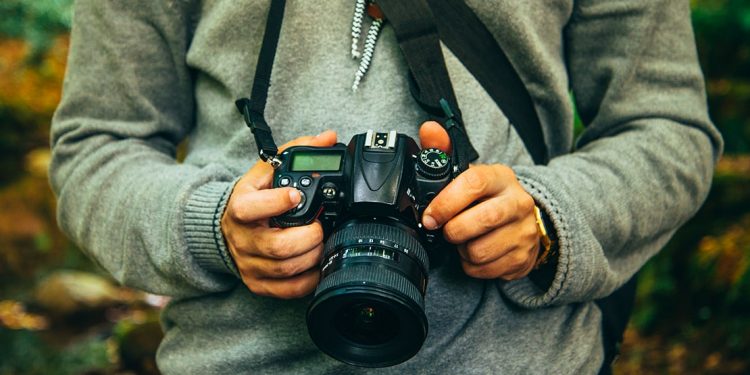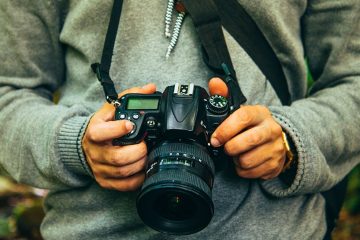
Capture Your Experiences for Yourself and Others
Gone are the days of lugging heavy camera and video equipment around the world to capture travel experiences. While there are still obvious benefits to using DSLRs and the like, when it comes to acceptable quality and convenience, the majority of people now use their smartphone’s camera to shoot their travels.
Technology has not only shrunk the size of cameras, but has made it easier than ever for people around the world to share their experiences through photos and video. Social media, too, has increased the speed at which content is shared, especially travel vlogs, via websites and apps that allow live streaming or the creation of cumulative stories.
Video is the perfect way to document your travels, allowing others to become fully immersed in your experience. But with so much content out there, it can seem like a lot of pressure to create something people want to watch.
While there’s no definitive recipe for success when creating a travel video, by following the tips below, you’ll at least have something you can be proud of that’s also share-worthy for family and friends.
Choose Your Equipment
When choosing equipment, consider your experience with shooting video first. Was the last thing you shot video on a clunky camcorder?
Do you use your smartphone for everything? Are you a photography or cinematography enthusiast?
Your equipment should be on the same level as your experience and comfort with cameras. There are plenty of amazing high-quality DSLRs that shoot video, but unless you know how to use them already, can dedicate a few months to learn the manual backward and forward, or have someone teach you, they’re not always the best choice for beginners.
GoPros, iPhones and other smartphones are top choices for their light weight, ease of use and fast transfer of data. Tripods aren’t really necessary unless you’re shooting a lot of motion, so monopods, GorillaPods and selfie-sticks are usually good enough.
To give your video a little more flair you can also use creative filters via apps such as 8MM, or use accessories such as clip-on lenses to make your video unique.
Creating a Story
Even more important than equipment and capturing beautiful imagery is the story behind it all. Think of a travel video in terms of what it is at its core: a moving picture.
All of the basic elements that movies use can be employed to create an effective and engaging travel video.
Films often use narration to help a story along, especially in documentaries. As a human being, your very existence is unique as are your experiences and understanding of the world.
Narrating your own journey gives a travel video a personal touch that also helps viewers understand why you included something in your story.
Varying up angles can also help tell a story and even express specific emotions. Shooting something from below can make it seem more grand than it is, or emphasize its size. While people are best shot from the front to get their whole face and expressions, angling the camera from the side offers a profile view that may accentuate certain features or emotions more dramatically.
Think of your video in journalistic terms: who, what, where, when, why and how. Get up close and personal with animals, children, food and nature, utilizing all five senses by describing to your viewers what they cannot experience.
Lastly, think of the purpose you want this video to serve while you’re shooting different things. Will it be a vlog of sorts where you intersperse your commentary with different clips you shot along the way? Or will it be more of a city guide, with you serving as a personal tour guide for all those watching as you explore a new place?
Did social distancing put a halt to your trips this year? Check out these free online virtual tours that are sure to please every traveler.
How to Edit
Editing a travel video doesn’t have to be super complicated, but your clips should at least be ordered in a way that tells a story. If you don’t have the time or experience to use a professional editing program such as Final Cut Pro or Adobe Premiere, there are apps that do most of the work for you.
Quik and Magisto select the best parts of your video clips and compile them into little films complete with music and effects. For shorter videos, Magisto allows you to upload up to 10 clips and photos, choose from a variety of songs and editing styles to compliment your video, and the app does the rest.
Quik has a lot more flexibility in creating a longer, more complex video. You can select a larger number of clips, photos, songs and styles to customize your travel video all from your phone, social media accounts or GoPro Plus.
If you use Apple products, you can also edit your video on an iPad using iMovie or even a Chrome extension. All your clips are compiled onto a timeline where you can snip off parts, add transitions, use filters and even record voice-over narration.
Android tablets offer Adobe Premiere Clip, which is a stripped down version of Adobe’s non-linear editing program. If you’re familiar with professional editing programs, this may not be the way to go, but it at least has options for color correcting, adjusting exposure and mixing clips together, which isn’t offered by most editing apps.
Where to Share It
Once you’ve finished editing your video, it’s time to share it with the world! Most of the apps mentioned offer a way to download and share your video on social media sites such as Facebook and Instagram.
Some, such as Magisto, also allow you to email the video directly to family and friends via their app or website.
Uploading the video directly to sites like YouTube, Vimeo or even Facebook will get you the most organic views since people use those sites like search engines for video content. Tag your video with relevant keywords according to the location, places visited and any other information that might be useful in finding your video among a sea of others.
You’ll also get a unique share link to give to friends and family.
Finally, if you have a blog already or have considered starting one, share your travel video on there! Whether or not your blog is specifically about travel, your followers will appreciate the visual content that further connects you to them.
You can also embed YouTube links on most blog sites, which gives you an even greater capacity for sharing your travels.
